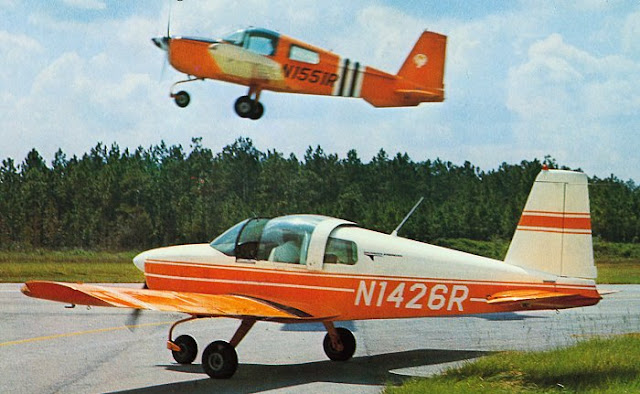Im assuming he is referring to the rumors that swirl around that if you get too slow they fall out of the sky and if you get in to spin it is not recoverable.
And it's an OWT as to the original "slick-wing" AA-1, as well.
I instructed primary, pre-solo students in several AA-1s when they were new. One of my primary students bought serial number 7 from our used-airplane line.
The original AA-1 does have a higher stall speed and sharper stall than the AA-1A/B/C, but it also cruises faster. It is an excellent trainer for someone intending to move up to high-performance, high-wing-loading types that require attention to airspeed on final.
If the Yankee could not have recovered from a spin it would never have been certified. Contributing to the OWT about the Yankee's spin characteristics is the old
video floating around of NASA spin tests of the prototype AA-1 Yankee in the 1970s. What is not often mentioned is that the test airplane was modified to explore the outer edges of spin aerodynamics, not necessarily to evaluate the production Yankee itself. In fact, according to an
AOPA Air Safety Foundation article, the NASA study compared spin recovery in the Yankee to the Piper Arrow:
But recovery from a spin is a far different matter, and takes much more altitude, even with skilled pilots. A NASA study done in the late 1970s proved that the average altitude loss in spins done with a Grumman American AA-1 (Yankee) and a Piper PA-28R (Arrow), two popular single-engine aircraft, was nearly 1,200 feet. (It should be noted that neither aircraft is approved for spins, but NASA was testing them for possible improvements in spin handling characteristics.)
In the Yankee, it took an average of 210 feet for entry, 340 feet for stopping the turn, and another 550 feet for recovery, for a total of 1100 feet. In the Arrow, the figures were 140 feet for entry, 400 feet for stopping the rotation, and 620 for recovery, for a total of 1160 feet.
In 1978 Grumman American advertised a "spin package" option (fuselage strakes and ventral fin, as shown on N1551R in the photo below) for the AA-1C Lynx, but I don't know if any airplanes were delivered to customers with this option.

